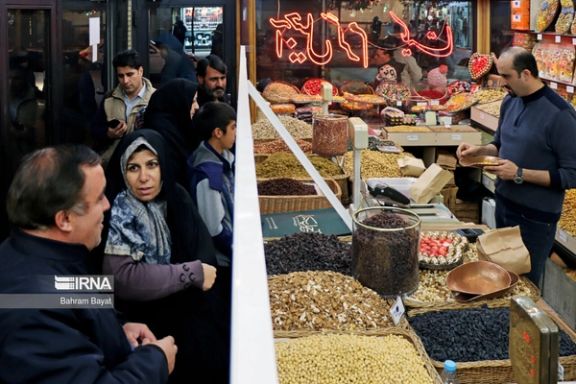Iran’s Inflation Hits 44%, Surpassing Monthly Averages

With Iran's inflation rate soaring, a new report suggests that the price hikes in most provinces are higher than the average figure announced by the authorities.

With Iran's inflation rate soaring, a new report suggests that the price hikes in most provinces are higher than the average figure announced by the authorities.
Fararu website in Tehran reported on Friday that the point-to-point inflation rate in December once again surpassed the 40% mark after five months. The index indicates that Iranian households spent approximately 40% more in the past month compared to the corresponding period of the previous year to meet their needs or purchase a range of goods and services.
According to the Iran Statistical Center's definition, point-to-point inflation rate represents the percentage change in the average of the price indices in comparison to the year before, providing a more tangible perspective on understanding price hikes. The reported point-to-point rate for the past month was 44.4% while the government had predicted an annual rate of 25 percent for the current Iranian year (started March 21).
There are no independent figures on the economy and no non-governmental entities to verify figures published by the authorities. Some politicians and media say that the real rate of inflation is higher that what the government announces.
The highest inflation rate this month was reported in hotel and restaurant services at 56.5 percent, exceeding about 16 percent over the average annual rate of about 40 percent promulgated by the authorities. Inflation for clothing and shoes was at 47.2%, cigarettes at 45.8%, recreation and culture at 44.1%, education at 42% and foods at 41.3%.
Notably, the prices of red and white meat have surged by about 95% in the last 12 months, also surpassing the overall inflation rate. Lawmaker Asghar Salimi cautioned earlier this month that meat is now excluded from the typical Iranian household's food basket, emphasizing the potential consequences for the next generation.
Iranian authorities use different rates for different political agendas. For example, when they aim to defend low salary increases for government sector workers, they use lower inflation figures, but when they want to justify the 34% rise in tariffs – announced Friday – they say the increase is less than the 40% general inflation.
Additionally, the government also focuses on the average for the entire country to decrease the figures, making the best uses of the poor provinces where goods and services are cheaper. According to the latest data, the point-to-point inflation rate for the Yazd province was more than 50% this month, the highest among the 31 provinces, suggesting that Yazd residents are more affected by inflation than those in any other province.
The Islamic Republic has been struggling with high inflation since 2019, but the raging inflation since May 2022 has been worse from previous years. Last May, the government eliminated an annual food import subsidy of $10-14 billion, which immediately led to steep price increases. This was followed by a fall in the value of the national currency, making imports more expensive for the population. Iran’s ruler Ali Khamenei has dubbed the current year as “the year of controlling inflation”, a promise also repeated by President Ebrahim Raisi, but reminiscent of similar slogans in previous years.
Economist Ali Sa’dvandi wrote on social media that “The year of controlling inflation concluded with a relative failure in achieving the goal.”
Addressing the Raisi administration in a sarcastic tone, he said, “You controlled the foreign currency market, decreased housing prices, slowed down the rise in the money supply and balanced out the banks’ shortfall in capital... so how did you fail to control inflation?”
When the central bank resorts to printing money without sufficient economic growth or foreign currency revenues, the money supply increases fast, which in turn leads to more currency devaluation and inflation. The biggest immediate reason for printing money is government borrowing from the Central Bank of Iran to bridge its budget deficit estimated to be at 50 percent.